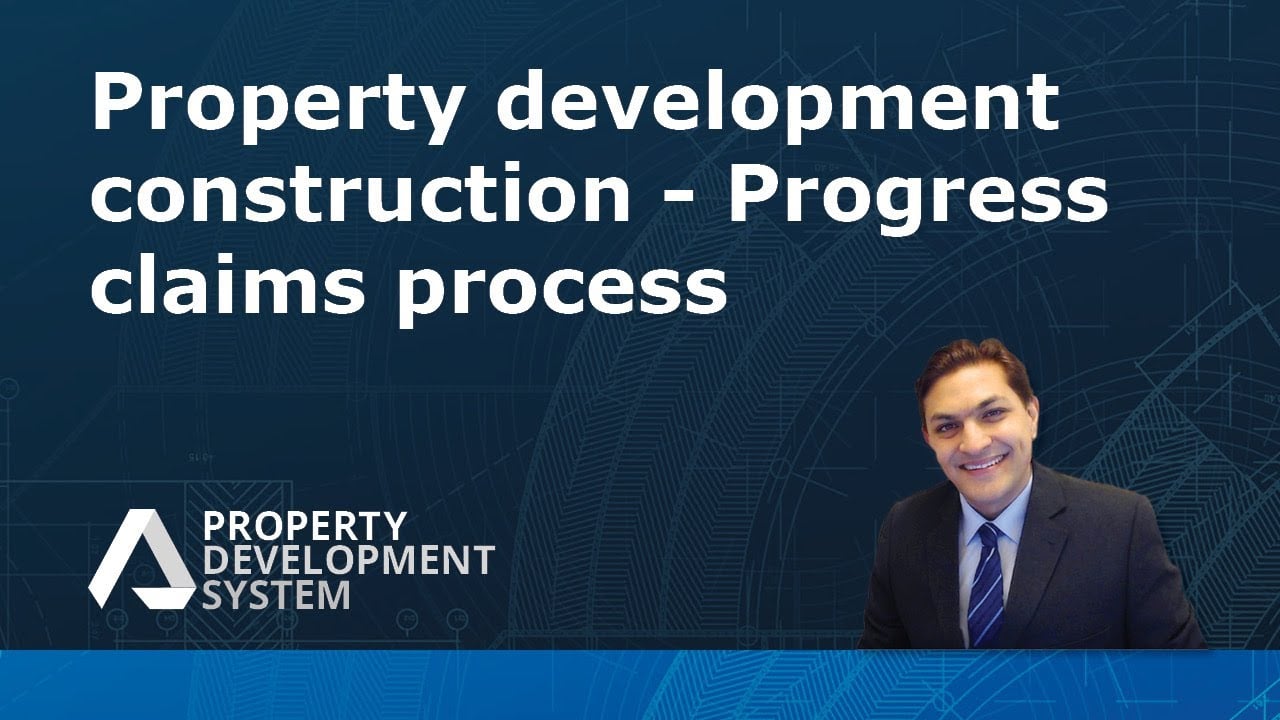Progress Claims Process
Explore the structured approach to managing financial transactions between builders and developers within construction projects. It delves into the essential steps of processing progress claims, emphasizing the role of the Quantity Surveyor (QS) in ensuring that claims are accurately assessed and paid.
Progress Claims
Claims builders make for work stages or monthly based on the building contract.
Assessment
Lender’s QS assesses claims, focusing on labor and materials used, not on unused site materials.
Procedure
Contractor and QS notify the developer, meet for on-site assessment, and QS signs off on work for lender payment.
Insights based on numbers
The video describes a detailed process within a span of about 1 minute and 25 seconds, highlighting the structured approach to handling progress claims in property development construction, focusing on the role of Quantity Surveyors (QS) in assessing the work done.
Frequently Asked Questions
How does the QS evaluate the progress claims made by the contractor?
Progress claims serve as a financial safeguard for both developers and contractors, ensuring that payments are made for work completed to date, rather than for projected future work.
This process helps developers maintain control over the project’s budget, reducing the risk of overpayment for incomplete work. For contractors, progress claims provide a steady cash flow, crucial for covering labor and material costs, thereby minimizing financial strain and enabling continuous work on the project.
This system fosters a mutually beneficial relationship, encouraging transparency and trust between both parties, which is essential for the successful completion of construction projects.
What are the specific stages or criteria used for making progress claims?
If the Quantity Surveyor (QS) does not accurately assess progress claims, several risks could emerge, impacting both the developer and the contractor.
For the developer, an inaccurate assessment could lead to overpayment for incomplete or unsatisfactory work, affecting the project’s budget and financial planning. This situation could also result in paying for materials not yet used, potentially leading to financial losses if those materials are wasted or not utilized efficiently.
For the contractor, inaccurate assessments could delay payments, disrupting cash flow and the ability to purchase materials or pay workers, which could halt project progress. Furthermore, consistent inaccuracies in assessments could damage the relationship between the developer and the contractor, leading to disputes, legal issues, and a loss of trust. This could not only delay the current project but also affect future collaborations between the parties.
How is the payment process managed between the financial lender and the contractor?
The direct payment process from the financial lender to the contractor streamlines construction projects by ensuring timely and accurate financial transactions, which are critical for maintaining steady progress. This method reduces administrative burdens and potential delays caused by intermediary processing, allowing contractors to receive payments faster. It also enhances transparency, as the payment is based directly on the Quantity Surveyor’s (QS) assessment of completed work, aligning financial transactions closely with the actual progress on site.
This efficiency in payment processing helps maintain a positive cash flow for contractors, crucial for covering ongoing expenses like labor and materials. For developers and lenders, it offers a clear, straightforward method of fund disbursement, tied directly to project milestones, ensuring that funds are used effectively and reducing the risk of financial mismanagement. Overall, this process promotes a healthier financial environment for all parties involved, contributing to smoother project execution and completion.
What is a progress claim in the context of construction projects?
A progress claim is a request for payment submitted by builders to developers. It is based on the stages of work completed or on a monthly basis, as stipulated in the building contract. This claim encompasses the costs related to labor and materials used in the construction up to that point.
Who assesses progress claims and what do they focus on?
The lender’s Quantity Surveyor (QS) is responsible for assessing progress claims. The QS focuses on evaluating the labor and materials that have been used in the construction project. Importantly, the assessment does not cover materials that are on-site but have not yet been used.
What is the procedure for processing a progress claim?
The procedure involves several key steps:
- The contractor notifies the developer about the completion of a work stage or the end of the month, triggering the need for a progress claim.
- The developer and the QS schedule a meeting for an on-site assessment of the work completed.
- Following the assessment, if the QS is satisfied with the progress, they sign off on the work, which then authorizes the lender to release payment to the builder.
What role does the Quantity Surveyor (QS) play in the progress claims process?
The Quantity Surveyor plays a critical role in ensuring the accuracy and fairness of the progress claims process. They assess the work completed, focusing on the labor and materials used, to determine the appropriate amount that should be paid to the builder. Their assessment ensures that payments are made only for work that has been satisfactorily completed, preventing overpayment and ensuring financial transparency and accountability in the construction project.
How is the structured approach to managing financial transactions highlighted in the progress claims process?
This approach involves clear steps for submitting, assessing, and approving progress claims, with the involvement of key stakeholders like builders, developers, and Quantity Surveyors. The structured process ensures that all financial transactions are based on the actual work completed, fostering a transparent and accountable construction project environment.
Test Your Knowledge
Multiple Choice Questions on Progress Claims Process
1. What is the primary purpose of progress claims in construction projects?
A. To request advance payments for future work
B. To secure materials before starting construction
C. To claim payment for work stages completed or on a monthly basis
D. To cover the administrative costs of the construction project
2. Which professional plays a key role in assessing progress claims?
A. The developer
B. The contractor
C. The lender’s Quantity Surveyor (QS)
D. The project manager
3. What aspect of the construction does the lender’s QS focus on when assessing progress claims?
A. Future project plans and blueprints
B. Labor and materials used in the construction
C. The aesthetic appeal of the construction work
D. Unused site materials
4. What triggers the process for a progress claim?
A. The contractor’s decision to purchase new materials
B. Completion of a work stage or the end of the month, as per the building contract
C. A request from the developer for a financial update
D. The arrival of new laborers on site
5. What does the QS do once the assessment of work is satisfactory?
A. Requests additional documentation from the contractor
B. Signs off on the work for lender payment
C. Schedules another assessment in a week
D. Informs the local government for regulatory purposes
6. The video highlighting the structured approach to handling progress claims is approximately how long?
A. 45 seconds
B. 1 minute
C. 1 minute and 25 seconds
D. 2 minutes
7. Why is the role of the Quantity Surveyor crucial in the progress claims process?
A. They provide legal advice to the developer.
B. They ensure that claims are accurately assessed and paid, focusing on labor and materials used.
C. They supervise the construction work on-site.
D. They are responsible for hiring laborers and purchasing materials.
Answers:
- C. To claim payment for work stages completed or on a monthly basis
- C. The lender’s Quantity Surveyor (QS)
- B. Labor and materials used in the construction
- B. Completion of a work stage or the end of the month, as per the building contract
- B. Signs off on the work for lender payment
- C. 1 minute and 25 seconds
- B. They ensure that claims are accurately assessed and paid, focusing on labor and materials used.
Assignment
Practical Exercise on Understanding the Progress Claims Process
Objective:
To reinforce the understanding of the progress claims process in construction projects, emphasizing the role of Quantity Surveyors (QS) and the structured approach to financial transactions between builders and developers.
To Do:
Create a Flowchart:
- Task: Draft a detailed flowchart that outlines the entire progress claims process, starting from the moment a builder completes a stage of work until payment is made by the lender.
- Considerations: Include key steps such as the builder’s claim submission, the QS’s assessment, and the final approval for payment. Highlight the QS’s role in this process.
Role-play Exercise:
- Task: In groups of three, simulate the progress claims process. Assign roles: one as the builder, one as the QS, and one as the developer.
- Scenario: The builder has completed a stage of work and is initiating a progress claim. The QS must assess the claim, and the developer oversees the process. Conclude with a discussion on the outcome.
Case Study Analysis:
- Task: Analyze a real-life case study of a construction project where the progress claims process either succeeded or faced challenges.
Questions for Analysis:
- How were progress claims submitted and assessed?
- What role did the QS play, and how was their assessment critical to the project’s financial management?
- Identify any challenges faced during the process and propose solutions.
Research Questions:
Explore the Role of Quantity Surveyors:
- Question: What are the qualifications and skills required to become a QS, and how do they contribute to the success of construction projects?
- Activity: Research and summarize the educational background, skills, and typical responsibilities of a QS in the context of construction projects.
Study Different Types of Construction Contracts:
- Question: How do different types of construction contracts (e.g., fixed price, cost-plus) impact the progress claims process?
- Activity: Compare and contrast at least two types of construction contracts, focusing on how progress claims are handled in each.
Investigate the Impact of Technology:
- Question: How has technology (software for project management, digital documentation, etc.) impacted the efficiency and accuracy of progress claims?
- Activity: Identify and examine technological tools that are transforming the progress claims process in construction projects.
Submission Requirements:
- Submit the flowchart as a PDF.
- Provide a written summary (300-500 words) of the role-play exercise, including the scenario outcome and key learnings.
- For the case study analysis, submit a report (500-1000 words) that addresses the questions provided and includes references to the case study materials.
- Research findings should be compiled into a document (500-750 words per question) with citations from credible sources.



